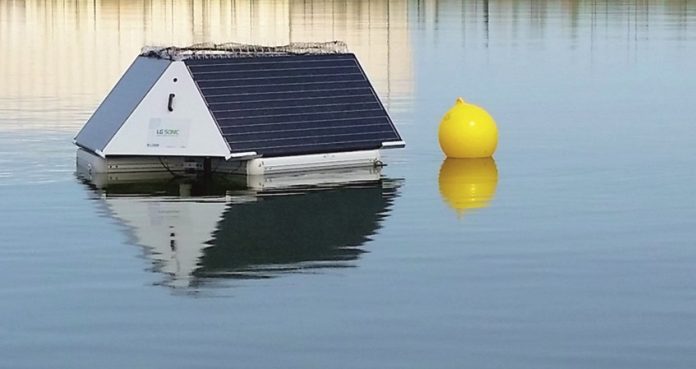One Dutch company believes that they key to reducing sea lice is to knock them off using ultrasound.
To say that lice is a serious major issue in salmon production is an understatment. The tiny, naturally occuring parasitic crustacians thrive in open salmon cages, causing the industry huge losses worth hundreds of millions of pounds in earnings.
For many farmers, the solution lies in chemical treatments such as hydrogen peroxide, but the clock is ticking on their use. The Netherlands-based algae-control company, LG Sonic, say the answer lies in scaling back sea lice numbers with ultrasonic frequencies.
Tristen Gunther, LG Sonic’s marketing manager, talked to us about the company’s mission to reduce the industry’s use of chemicals.
Less sea lice
Back in May 2017, we reported that the research project had shown promising lab results. Today, the company says that its test site in Norway has enjoying been interesting results with less sea lice recorded in the cages that the units were tested in.
“Sea lice cause health issues to fish and most solutions revolve around chemicals, antibiotics and delousing which causes stress for fish. We wanted to create a different solution that doesn’t disturb the fish, is chemical free and low maintenance,” said Gunther in an email.
Shake off from the fish
“The main idea of the product is to disturb the sea lice with ultrasound and make the lice shake off from the fish,” said Gunther. “The devices send out specific ultrasonic frequencies that affect the sea lice and larvae but are harmless for fish. We were testing the frequencies in the starting phases of the project. LiceSonic will allow us to reduce the amount of chemicals as our solution is completely chemical-free. ”

The ultrasound devices are installed directly in one cage on various levels, which communicate with other devices via a network that will send necessary data on shore and to LG Sonic. The software integration allows the company to visualize technical data and the selected water quality information that is necessary to analyze the stage of sea lice in the water. “Based on the analysis we can optimize the treatment to target sea lice according to their growth stage,” said Gunther.
Cleaner fish?
Earlier in the year, two of Scotland’s biggest salmon producers said they have made a breakthrough in the rearing of lump-fish and wrasse to tackle sea lice. Could the success of this pose a problem to the project?
“Cleaner fish are one method to reduce sea lice but this has problems of their own. The efficiency is not always optimal and it can take an effort to keep the cleaner fish healthy. The solutions could be used alongside each other as well,” explained Gunther.
The LiceSonic product is expected to be released in the last quarter of 2019 as a fully tested and scalable product.


